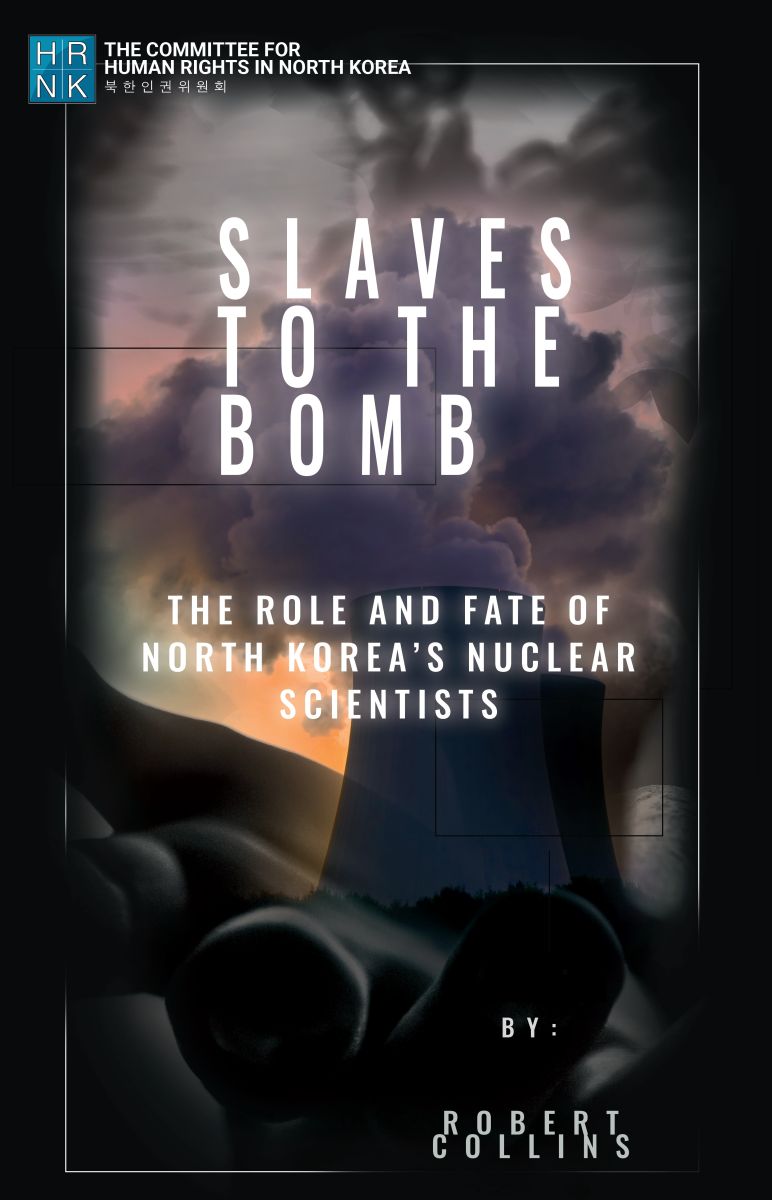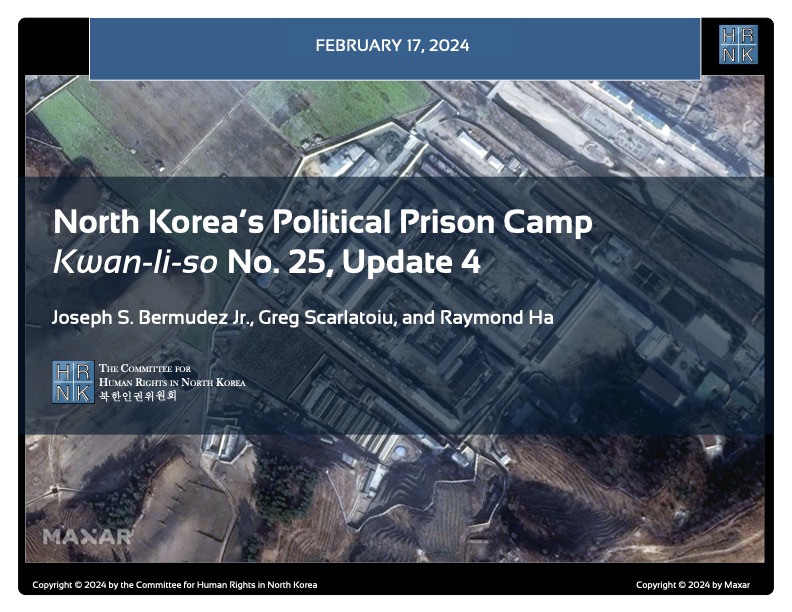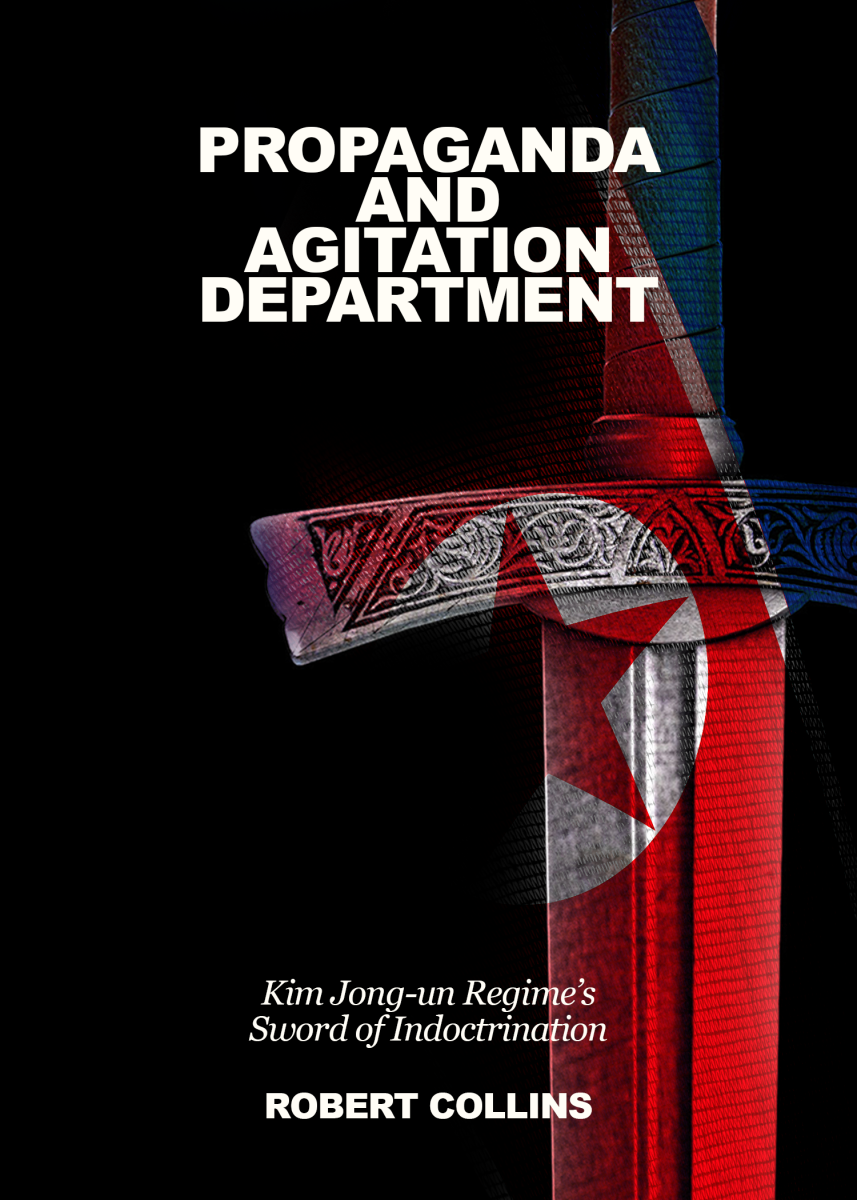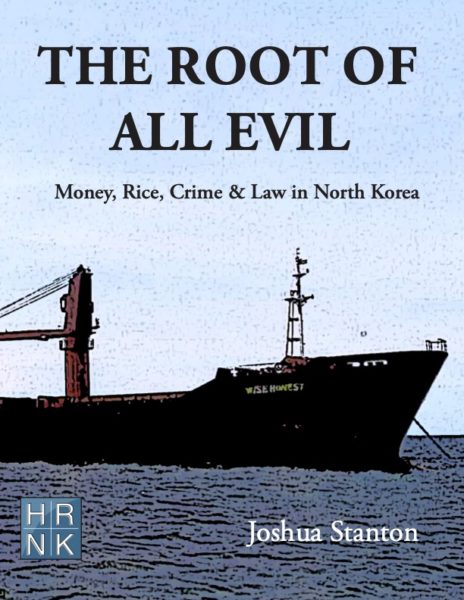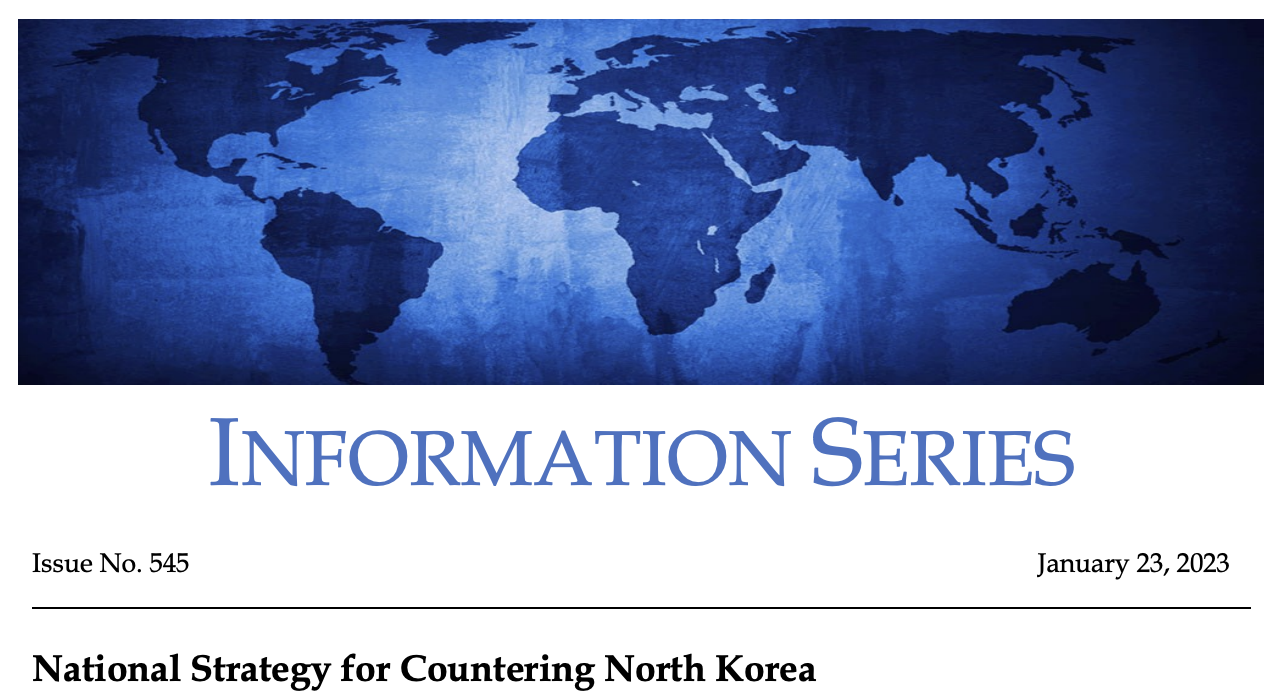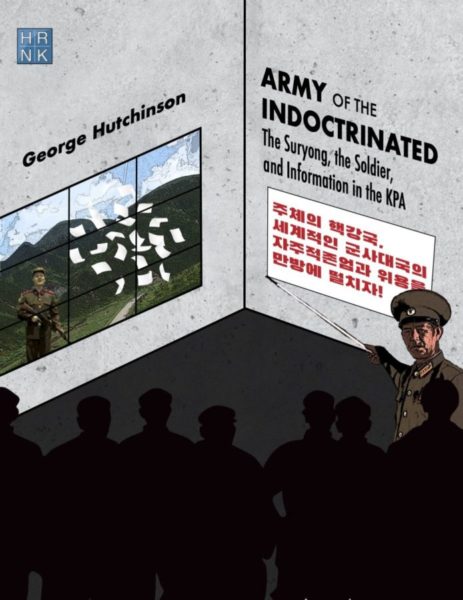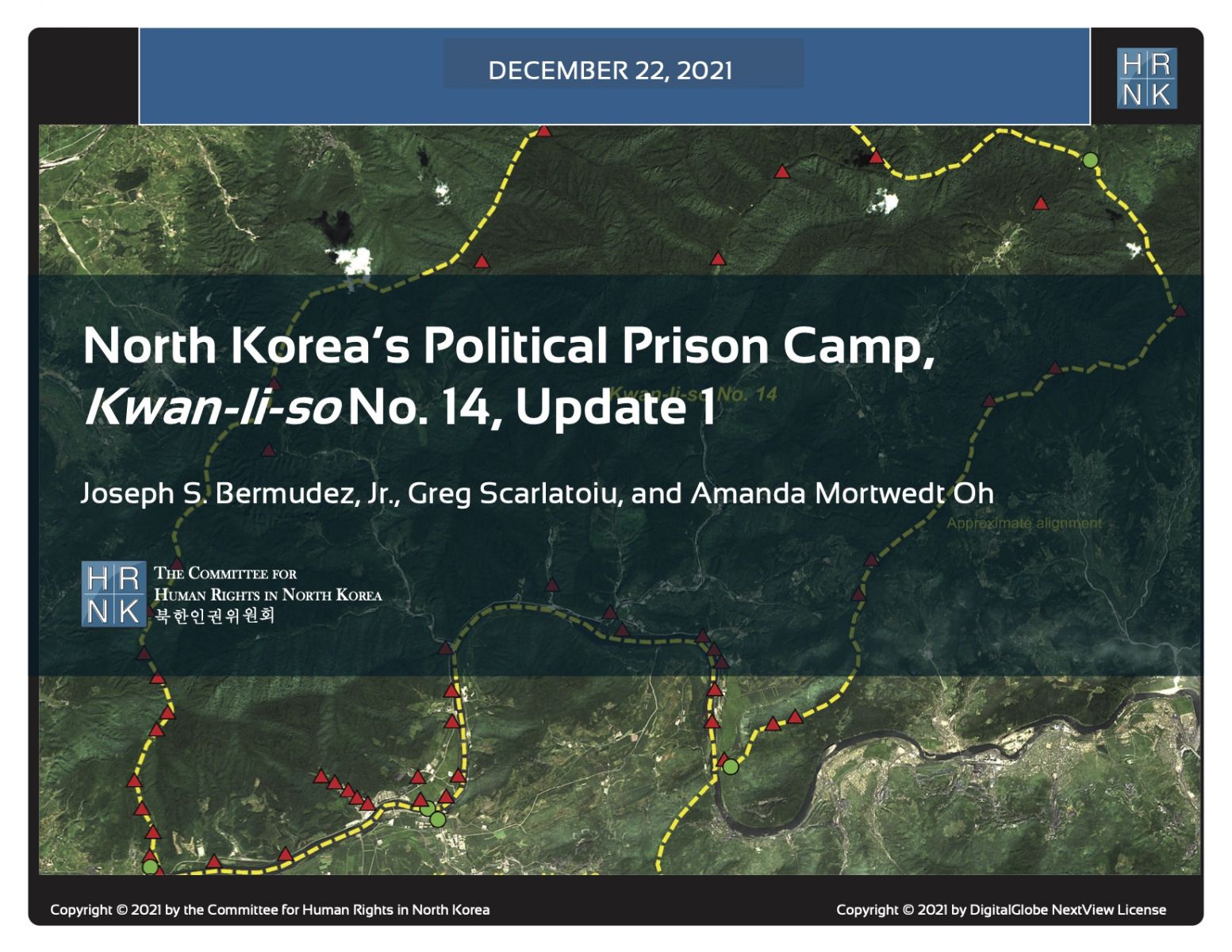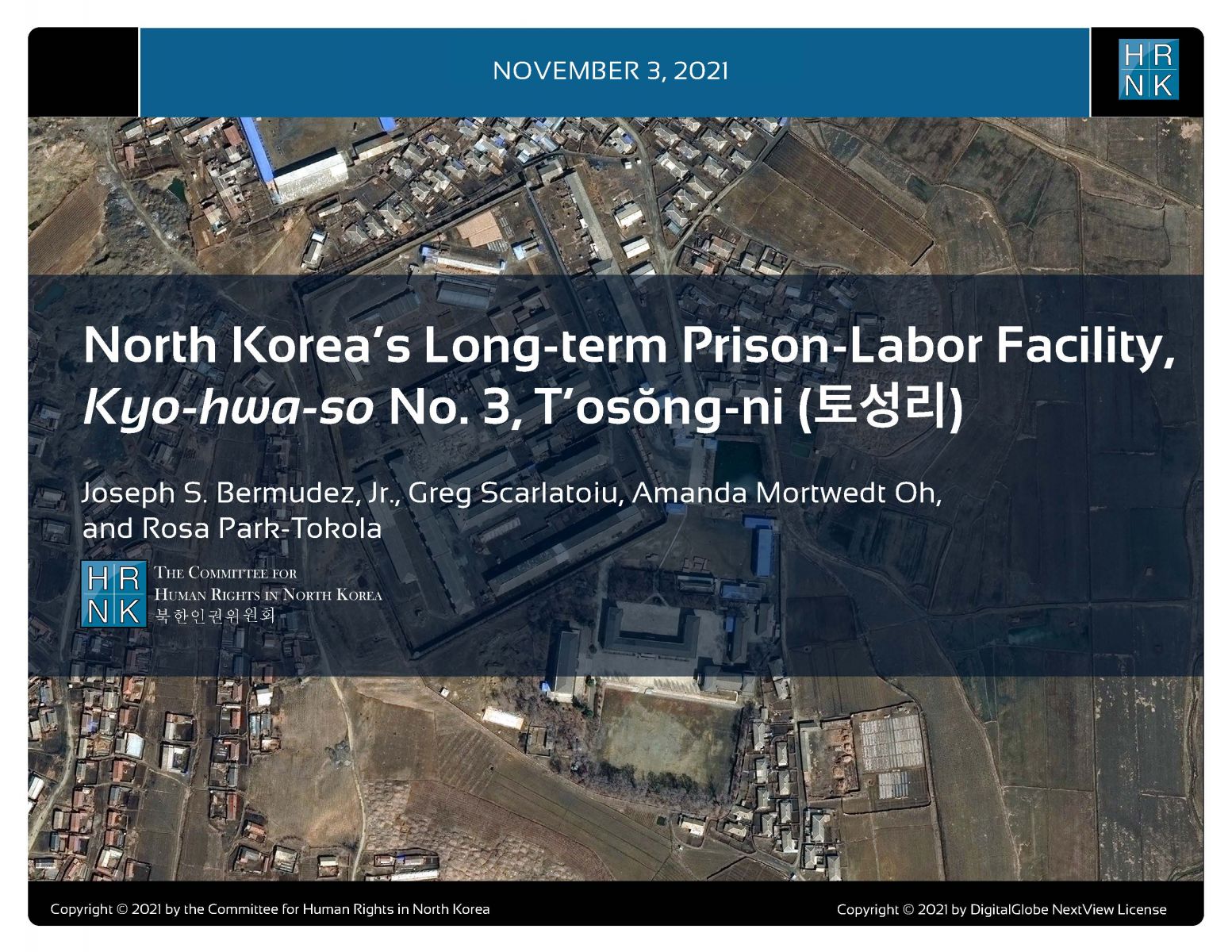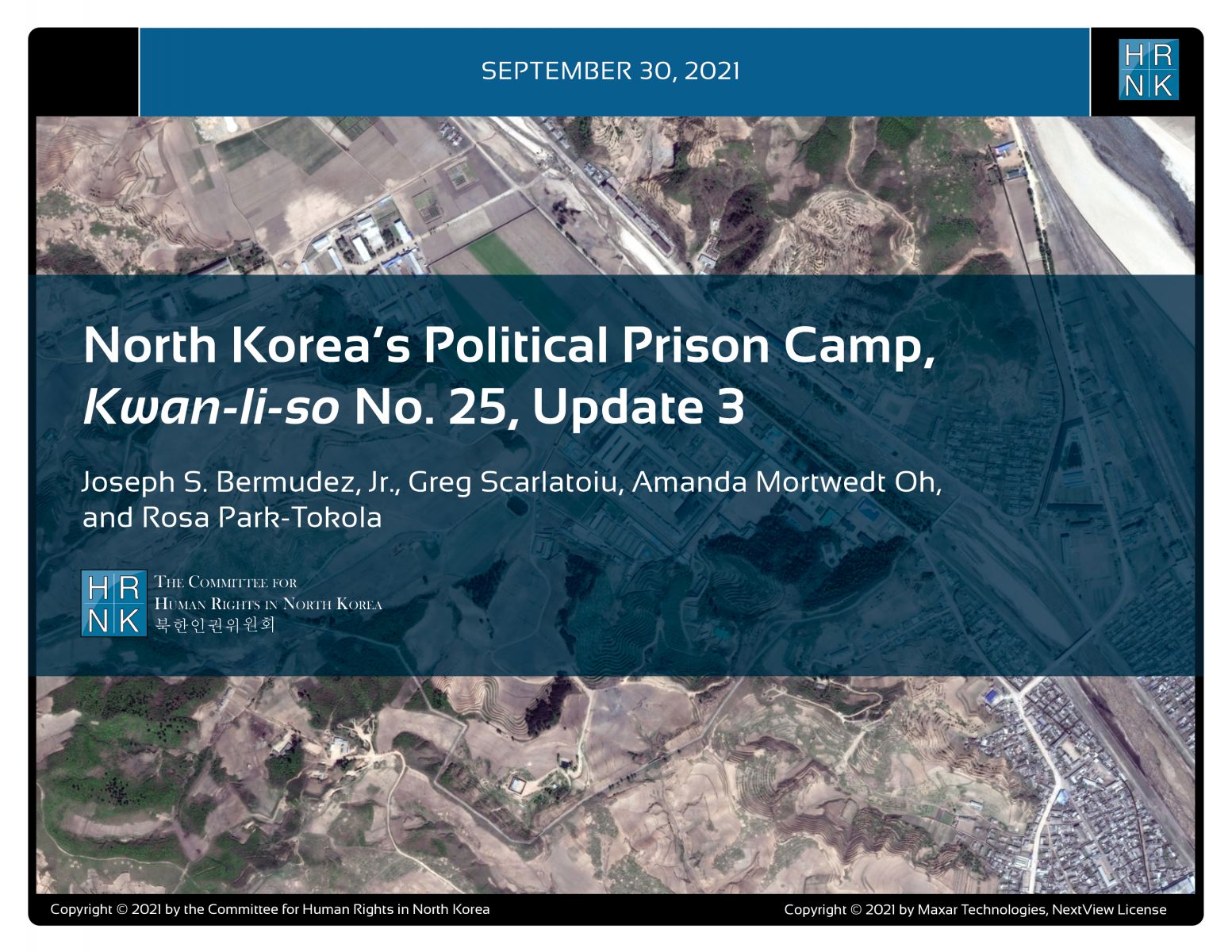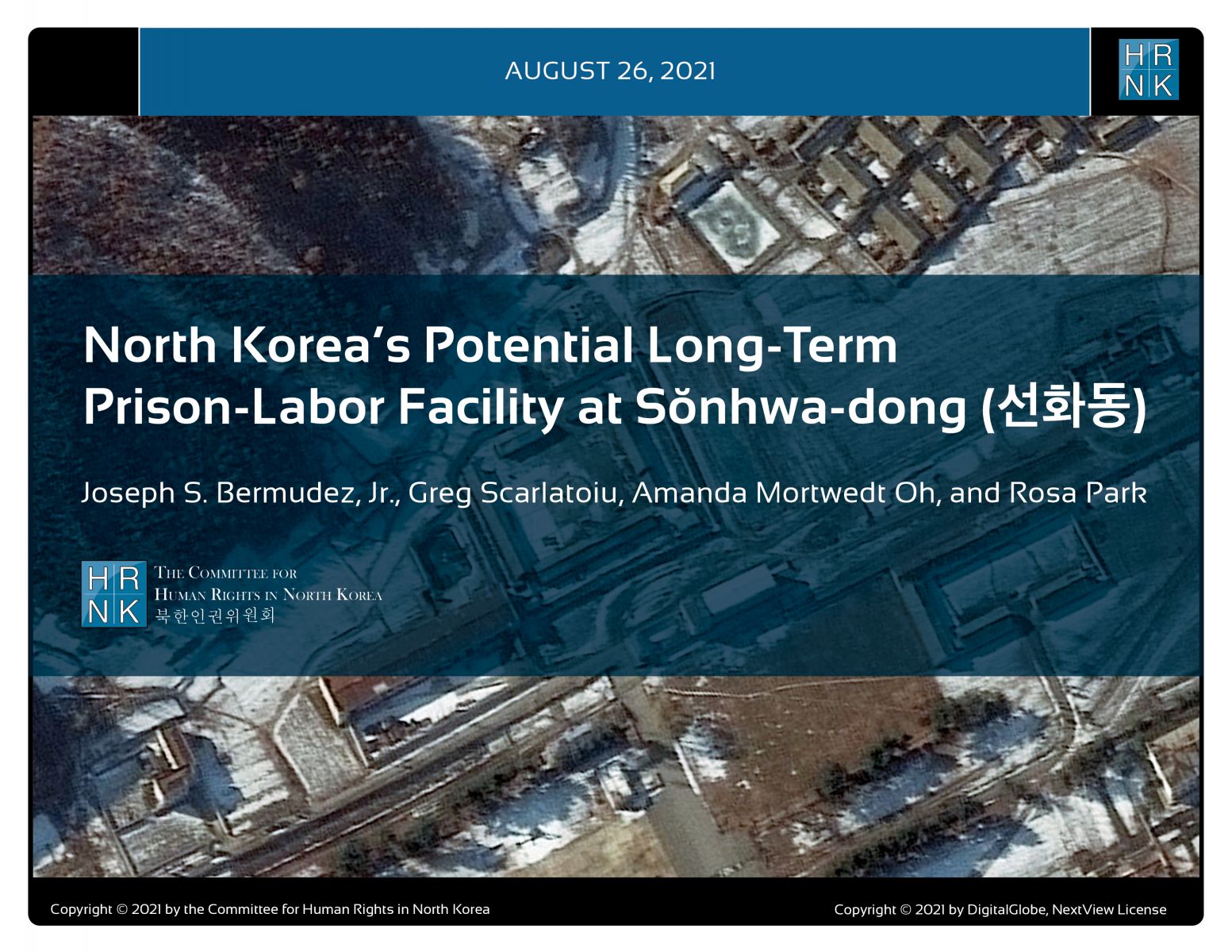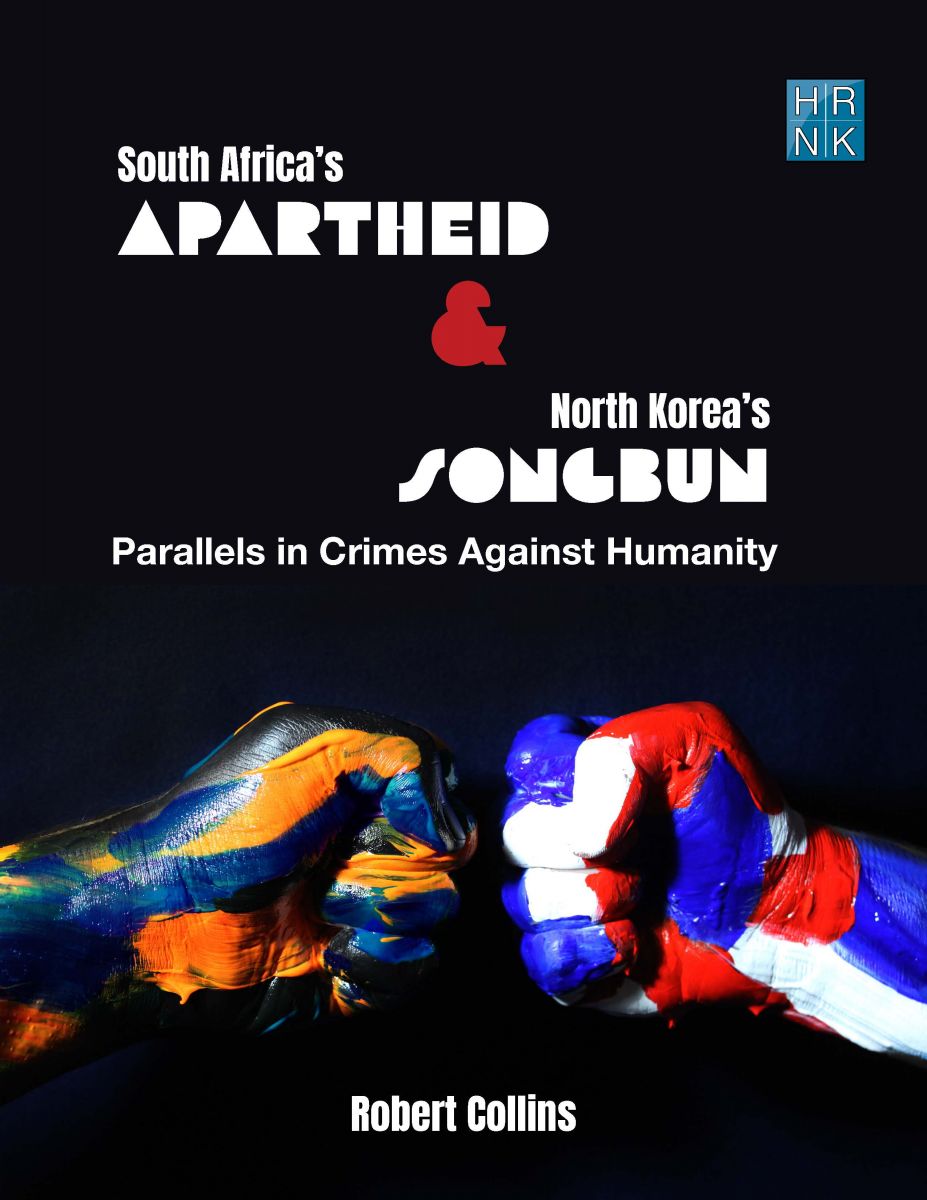PRESS RELEASE
Report Embargoed until 12:01 am EDT, Wednesday, October 24, 2012
HRNK and DigitalGlobe Launch Report Based on Satellite Imagery of North Korea’s Political Prison Camp No. 22
The Committee for Human Rights in North Korea (HRNK), a non-governmental organization based in Washington, D.C., in collaboration with DigitalGlobe (NYSE: DGI), a leading global provider of high-resolution earth imagery solutions, will launch a report entitled North Korea’s Camp No. 22. The report, embargoed until 12:01 am EST Wednesday, October 24, follows up on press reports that this camp, located in Hoeryong, North Hamgyong Province, was shut down in June.
The report is the first step in a collaborative effort by HRNK and DigitalGlobe to create a clear picture of the evolution and current state of North Korea’s political prison camps. DigitalGlobe will provide new imagery, acquired specifically for this project, and older imagery saved in its archives together with an analysis to HRNK, the NGO that put North Korea’s penal labor colonies on the map by publishing Hidden Gulag by David Hawk in 2003 and Hidden Gulag Second Edition in 2012. Together, the two organizations will closely monitor North Korea’s political prison camps so that any attempts to distort the harsh reality of the camps by destroying evidence will not go unnoticed.
Based on an analysis of DigitalGlobe images from November 5, 2010, May 21, 2011, and October 11, 2012, the HRNK-DigitalGlobe report North Korea’s Camp No. 22 concludes that the imagery does not support reports that Camp 22 was shut down or abandoned during 2012. Harvesting of crops continues as does coal production, making it not yet clear that the camp has closed and that North Korean authorities have been slowly transferring small sections of prisoners out of Camp 22 and replacing them with a regular workforce from other locations. The satellite imagery does show the razing of a building that defectors identify as an interrogation center, but the report finds that “the camp remains operational.” Consequently, HRNK and DigitalGlobe will continue to closely monitor developments at the camp and throughout North Korea’s political prison camp system.
“The North Korean regime’s hiding and distorting the harsh reality of North Korea’s unforgiving political prison camp system is no longer an option,” said Greg Scarlatoiu, Executive Director of the Committee. “With constant satellite imagery, we can maintain a watch over these camps even if no outside entry is allowed.”
More than 120 states in the United Nations General Assembly expressed “serious concern” in 2011 about “the existence of a large number of prison camps and the extensive use of forced labor” in North Korea. “If North Korea is trying to make a Potemkin Village out of Camp 22, the world should know,” added Mr. Scarlatoiu.
HRNK’s 2012 report Hidden Gulag Second Edition contains information about Camp 22 and all other known camps. It concludes with a “a blue-print” for disabling and dismantling the prison labor camp system. It recommends immediate access to the prison camps by the International Committee of the Red Cross (ICRC) and the World Food Program. It recommends the creation of an international commission of inquiry to investigate North Korea’s breaches of international human rights law and international criminal law, concluding that massive crimes against humanity are being perpetrated in North Korea. It calls on China to allow access by the UN High Commissioner for Refugees (UNHCR) to all North Koreans seeking refuge in China, and calls on the United States, the Republic of Korea and Japan to integrate human rights concerns into any future normalization of political and economic relations with North Korea.
HRNK, established in 2001 by a distinguished group of foreign policy and human rights specialists, seeks to draw attention to human rights conditions in North Korea by publishing well-documented reports and papers, convening conferences, testifying at national and international fora, and seeking creative ways to end the isolation of the North Korean people.
The report North Korea’s Camp No. 22, embargoed until 12:01 am Wednesday, October 24, is available on HRNK’s website: www.hrnk.org
Contact: Greg Scarlatoiu, [email protected]; 202-499-7973
HRNK wishes to credit the role that DigitalGlobe experts are playing pro bono in this project, in particular Senior Analyst Joseph S. Bermudez Jr., Imagery Analyst Amy Opperman, and Publishing Editor Katelyn Amen. HRNK also wishes to thank Curtis Melvin for the advice he provided to HRNK staff and interns, and acknowledges the contributions of David Zeglen (Norwegian University of Science and Technology—NUST) and HRNK Editorial Consultant Rosa Park.
This is the first satellite imagery report by HRNK on a long-term political prison commonly identified by researchers and former detainees as Kwan-li-so No. 18 (Pukch'ang). This report was concurrently published on Tearline at https://www.tearline.mil/public_page/prison-camp-18.
To understand the challenges faced by the personnel who are involved in North Korea’s nuclear program, it is crucial to understand the recruitment, education, and training processes through the lens of human rights. This report offers a starting point toward that understanding. North Korea’s scientists and engineers are forced to work on the nuclear weapons program regardless of their own interests, preferences, or aspirations. These individuals may be described as “moder
In this submission, HRNK focuses its attention on the following issues in the DPRK: The status of the system of detention facilities, where a multitude of human rights violations are ongoing. The post-COVID human security and human rights status of North Korean women, with particular attention to sexual and gender-based violence (SGBV). The issue of Japanese abductees and South Korean prisoners of war (POWs), abductees, and unjust detainees.
This report provides an abbreviated update to our previous reports on a long-term political prison commonly identified by former prisoners and researchers as Kwan-li-so No. 25 by providing details of activity observed during 2021–2023. This report was originally published on Tearline at https://www.tearline.mil/public_page/prison-camp-25.
This report explains how the Kim regime organizes and implements its policy of human rights denial using the Propaganda and Agitation Department (PAD) to preserve and strengthen its monolithic system of control. The report also provides detailed background on the history of the PAD, as well as a human terrain map that details present and past PAD leadership.
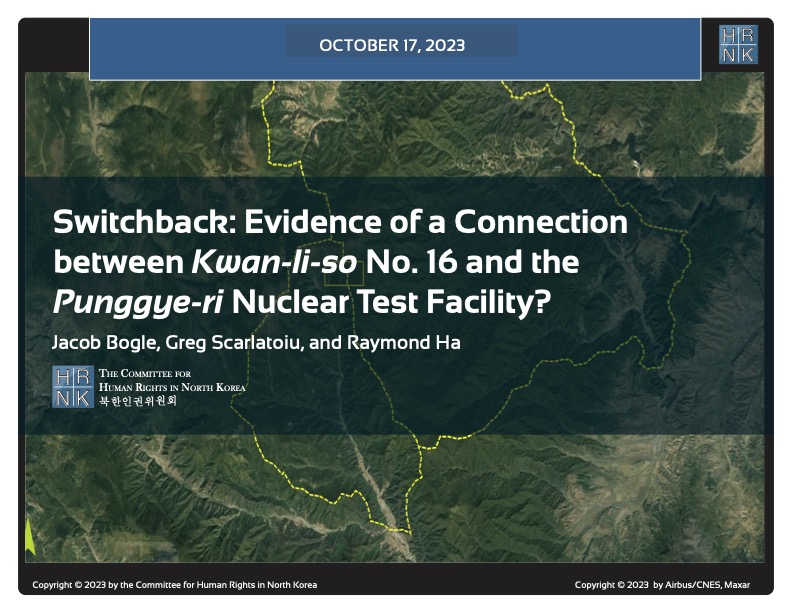
HRNK's latest satellite imagery report analyzes a 5.2 km-long switchback road, visible in commercial satellite imagery, that runs from Testing Tunnel No. 1 at North Korea's Punggye-ri nuclear test facility to the perimeter of Kwan-li-so (political prison camp) no. 16.
This report proposes a long-term, multilateral legal strategy, using existing United Nations resolutions and conventions, and U.S. statutes that are either codified or proposed in appended model legislation, to find, freeze, forfeit, and deposit the proceeds of the North Korean government's kleptocracy into international escrow. These funds would be available for limited, case-by-case disbursements to provide food and medical care for poor North Koreans, and--contingent upon Pyongyang's progress
For thirty years, U.S. North Korea policy have sacrificed human rights for the sake of addressing nuclear weapons. Both the North Korean nuclear and missile programs have thrived. Sidelining human rights to appease the North Korean regime is not the answer, but a fundamental flaw in U.S. policy. (Published by the National Institute for Public Policy)
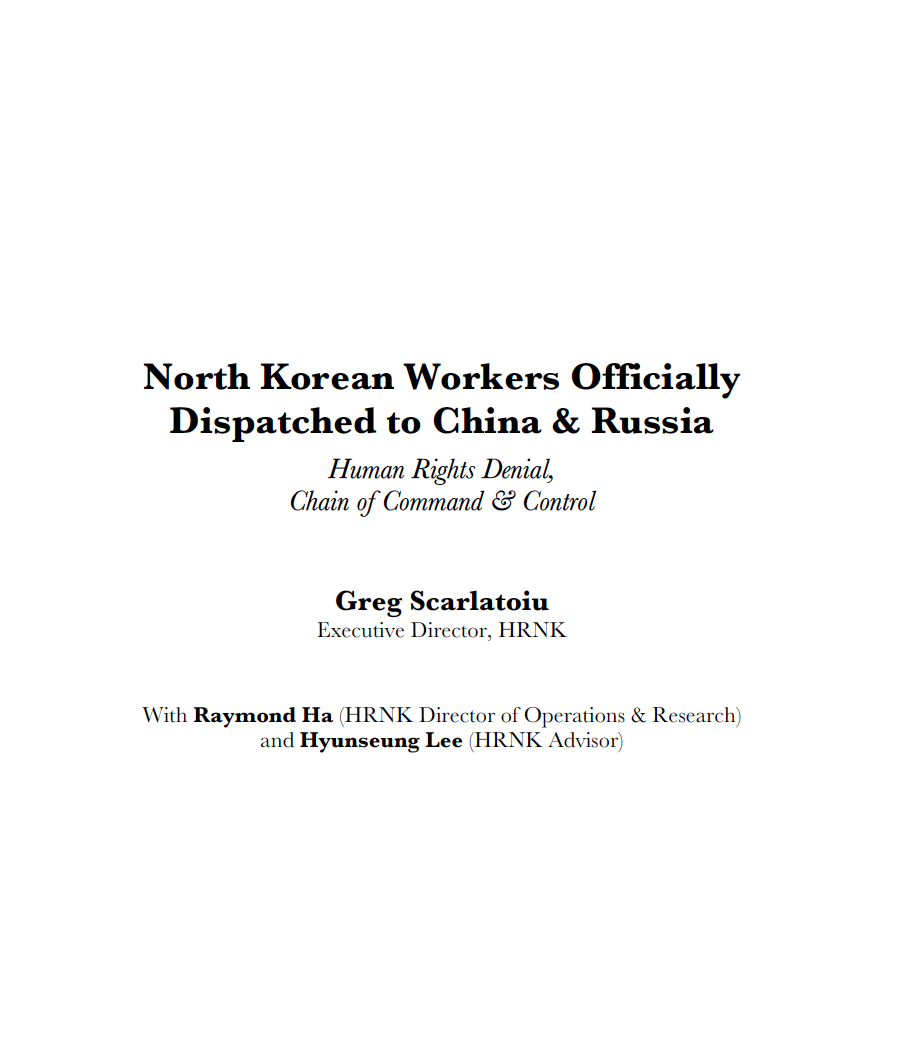
North Korea’s forced labor enterprise and its state sponsorship of human trafficking certainly continued until the onset of the COVID pandemic. HRNK has endeavored to determine if North Korean entities responsible for exporting workers to China and Russia continued their activities under COVID as well.
George Hutchinson's The Suryong, the Soldier, and Information in the KPA is the second of three building blocks of a multi-year HRNK project to examine North Korea's information environment. Hutchinson's thoroughly researched and sourced report addresses the circulation of information within the Korean People's Army (KPA). Understanding how KPA soldiers receive their information is needed to prepare information campaigns while taking into account all possible contingenc
This report is part of a comprehensive long-term project undertaken by HRNK to use satellite imagery and former prisoner interviews to shed light on human suffering in North Korea by monitoring activity at political prison facilities throughout the nation. This is the second HRNK satellite imagery report detailing activity observed during 2015 to 2021 at a prison facility commonly identified by former prisoners and researchers as “Kwan-li-so No. 14 Kaech’ŏn” (39.646810, 126.117058) and
This report is part of a comprehensive long-term project undertaken by HRNK to use satellite imagery and former prisoner interviews to shed light on human suffering in North Korea by monitoring activity at civil and political prison facilities throughout the nation. This study details activity observed during 1968–1977 and 2002–2021 at a prison facility commonly identified by former prisoners and researchers as "Kyo-hwa-so No. 3, T'osŏng-ni" and endeavors to e
This report is part of a comprehensive long-term project undertaken by HRNK to use satellite imagery and former detainee interviews to shed light on human suffering in the Democratic People’s Republic of Korea (DPRK, more commonly known as North Korea) by monitoring activity at political prison facilities throughout the nation. This report provides an abbreviated update to our previous reports on a long-term political prison commonly identified by former prisoners and researchers as Kwan-li-so
Through satellite imagery analysis and witness testimony, HRNK has identified a previously unknown potential kyo-hwa-so long-term prison-labor facility at Sŏnhwa-dong (선화동) P’ihyŏn-gun, P’yŏngan-bukto, North Korea. While this facility appears to be operational and well maintained, further imagery analysis and witness testimony collection will be necessary in order to irrefutably confirm that Sŏnhwa-dong is a kyo-hwa-so.
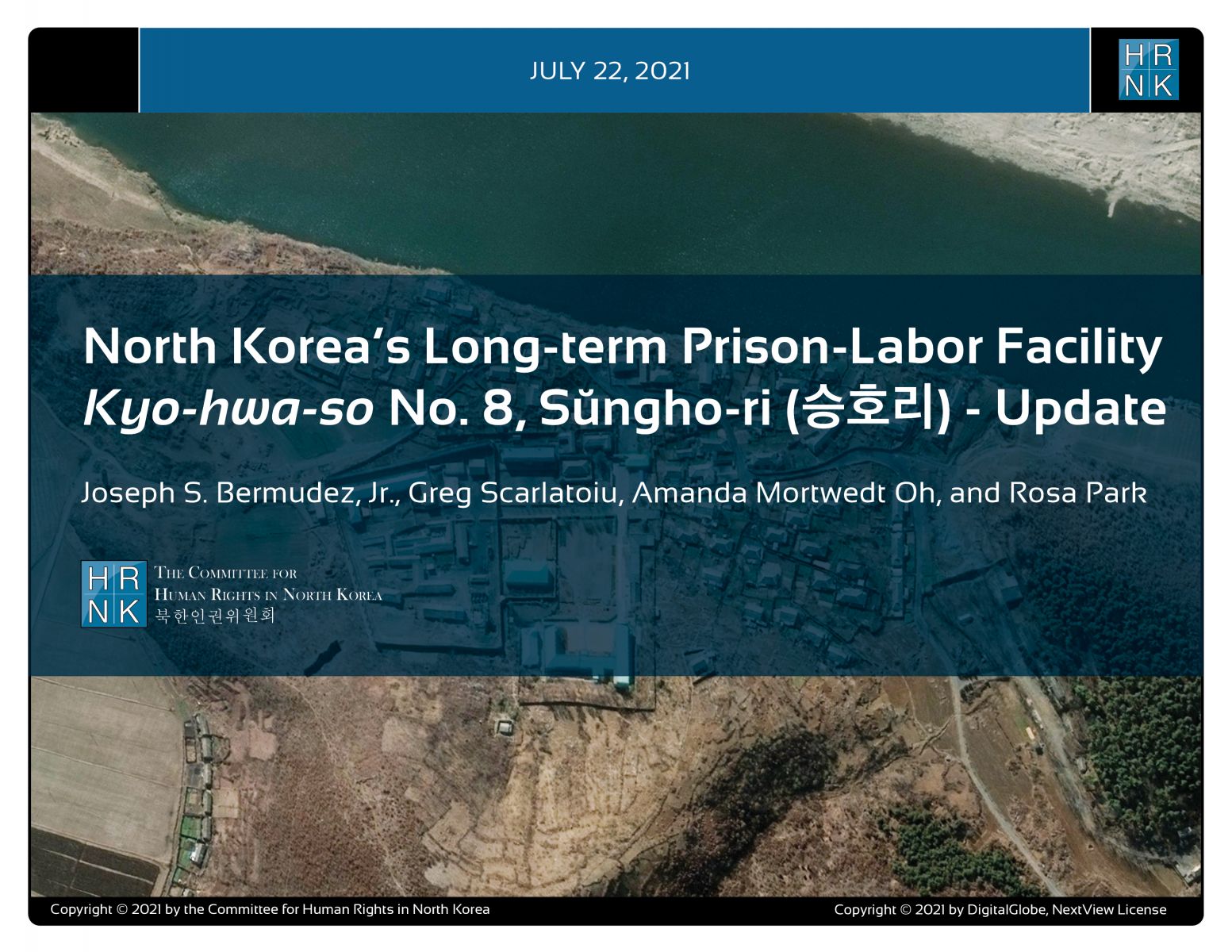
"North Korea’s Long-term Prison-Labor Facility Kyo-hwa-so No. 8, Sŭngho-ri (승호리) - Update" is the latest report under a long-term project employing satellite imagery analysis and former political prisoner testimony to shed light on human suffering in North Korea's prison camps.
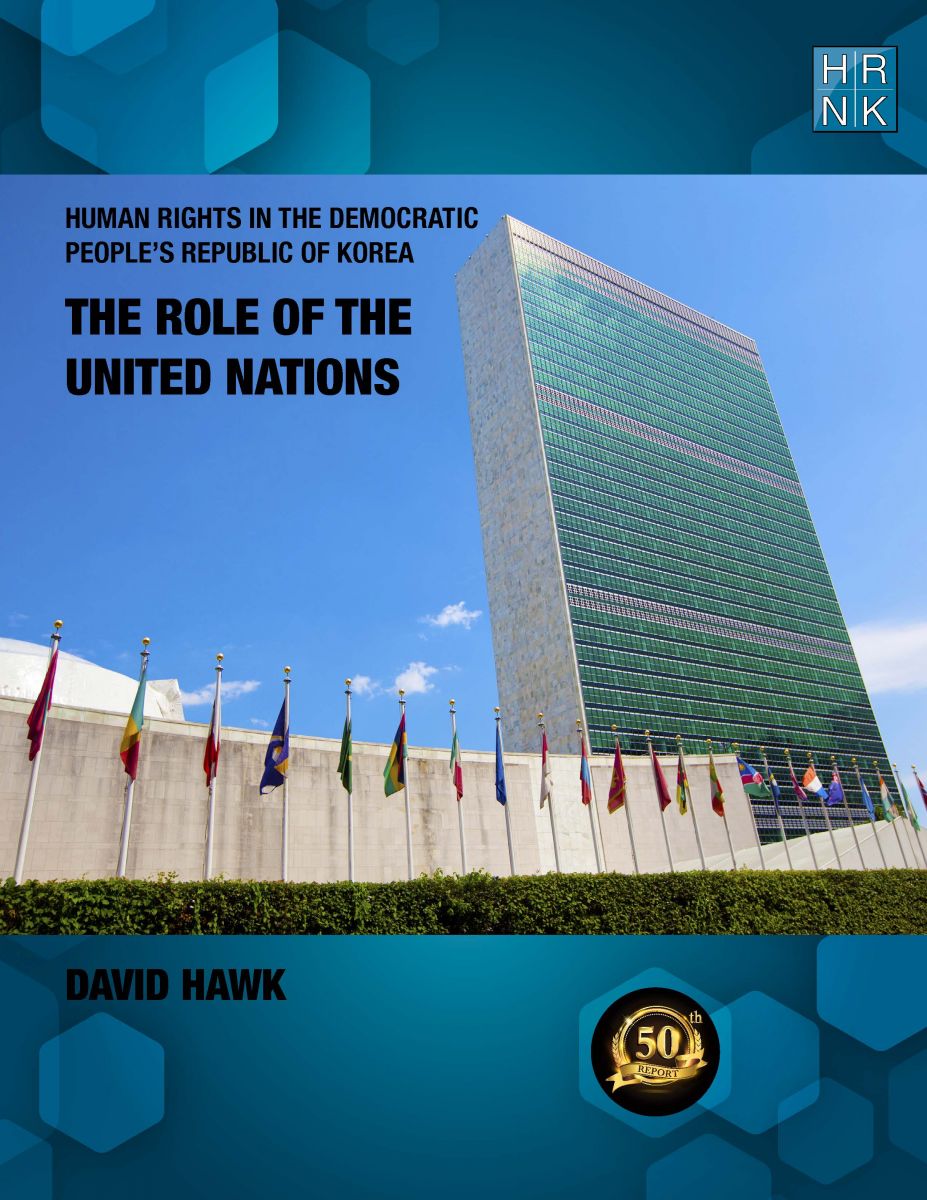
Human Rights in the Democratic Republic of Korea: The Role of the United Nations" is HRNK's 50th report in our 20-year history. This is even more meaningful as David Hawk's "Hidden Gulag" (2003) was the first report published by HRNK. In his latest report, Hawk details efforts by many UN member states and by the UN’s committees, projects and procedures to promote and protect human rights in the DPRK. The report highlights North Korea’s shifts in its approach
South Africa’s Apartheid and North Korea’s Songbun: Parallels in Crimes against Humanity by Robert Collins underlines similarities between two systematically, deliberately, and thoroughly discriminatory repressive systems. This project began with expert testimony Collins submitted as part of a joint investigation and documentation project scrutinizing human rights violations committed at North Korea’s short-term detention facilities, conducted by the Committee for Human Rights

